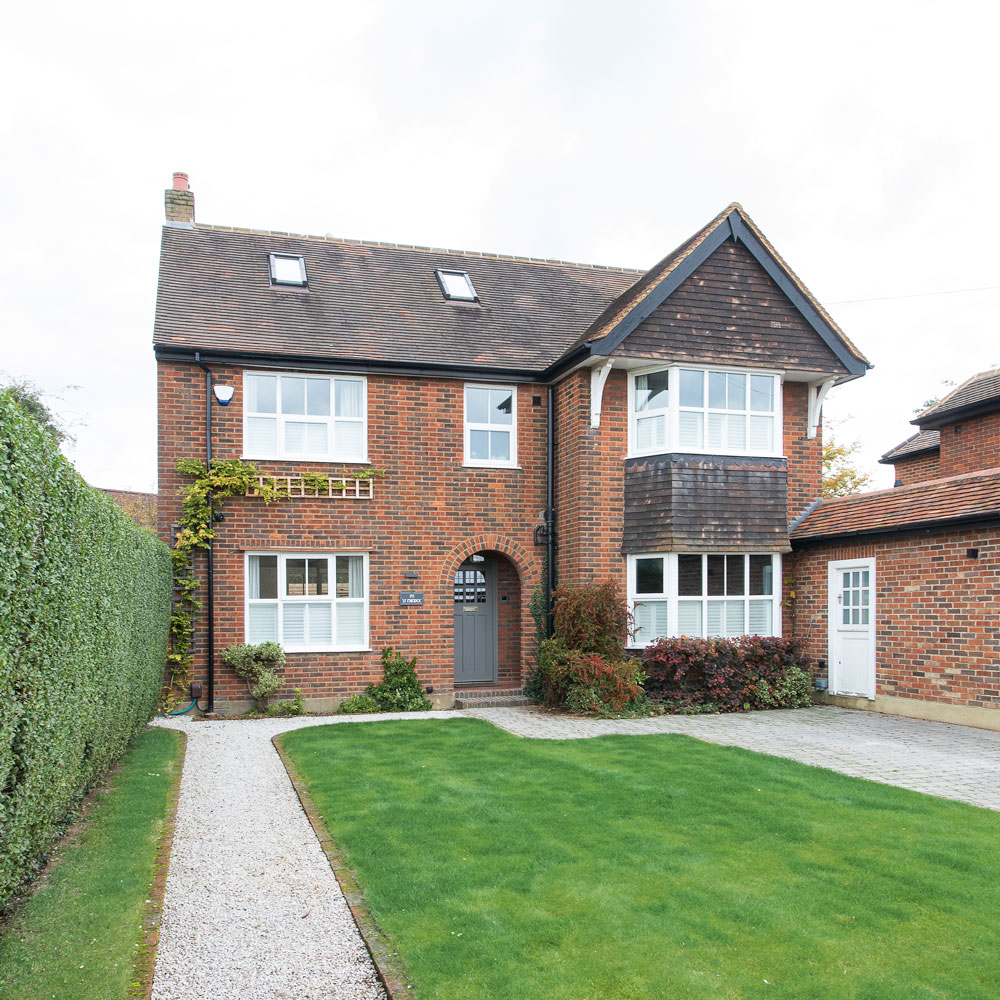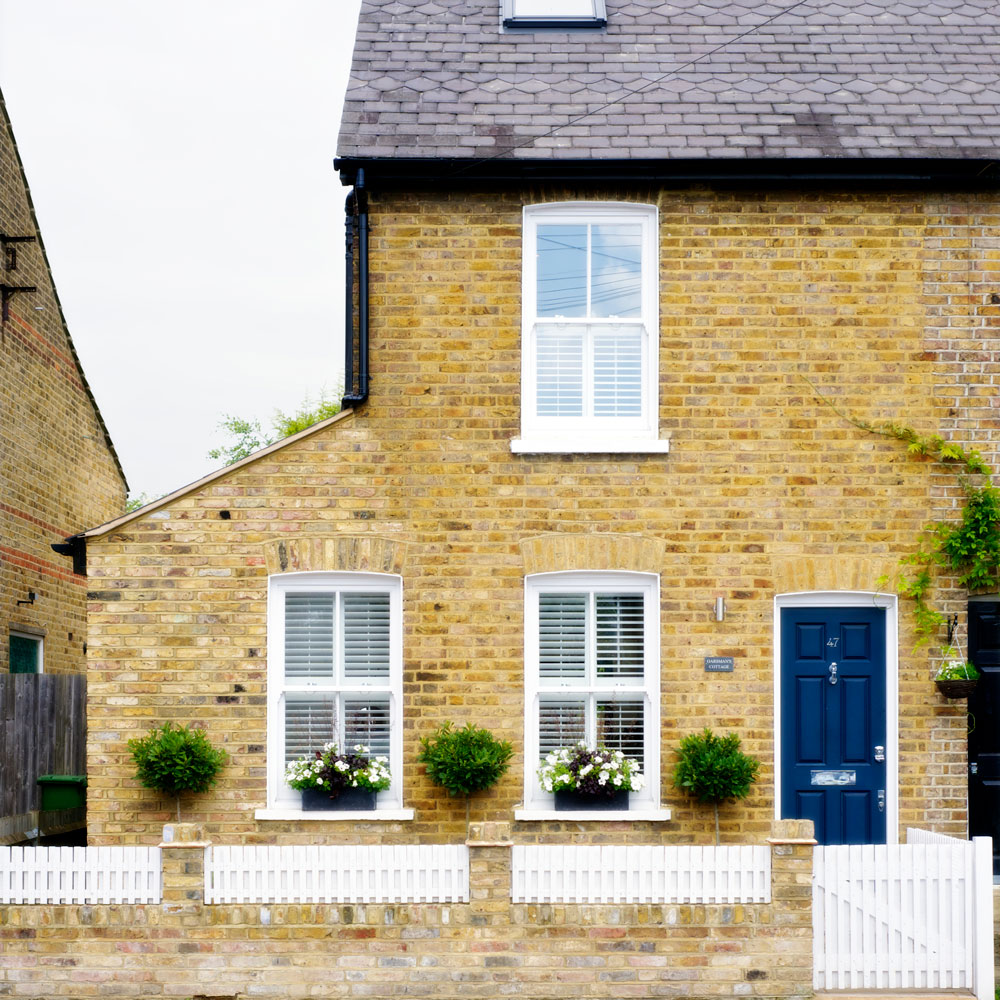How much does cavity wall insulation cost?
What to budget for when retrofitting cavity wall insulation

Packing your cavity walls with insulation will help to create a cosy living space at the same time as lowering your heating bills. The question is how much does cavity wall insulation cost to install?
The typical cavity wall insulation (CWI) installation cost for a detached house is £610. Homeowners can then access savings of £310 a year on their utility bills (based on fuel prices in November 2021, according to the Energy Saving Trust). This means a payback time of just two years. However, prices have risen sharply in recent times and our research suggests you should budget more for CWI installation.
With energy prices going up, it’s tricky to predict exactly how much you’ll save going forward. There's no doubt that homes with CWI will certainly see lower bills than without, so it’s actually a good time to invest.
How much does cavity wall insulation cost?

'Cavity wall insulation is a good place to start to mitigate rising fuel costs and it is far cheaper than external and internal wall insulation,' says Nigel Donohue, CEO at the Insulation Assurance Authority. 'Look to budget £1,200-£1,500 for cavity wall insulation costs. You’ll get the best benefits if it’s part of a longer-term plan for other upgrades that will help your home’s energy efficiency.'
The prices mentioned in this cavity wall insulation cost article are indicative averages collated from costs supplied by a range of Trustmark and Insulation Assurance Authority (IAA) member CWI installers, including EDF Energy, Evolve Home Energy Solutions, Envo Energy Solutions and InstaGroup. Be aware that prices fluctuate and some building materials have experienced supply shortages and cost hikes.
Here are the types of cavity wall insulation and the amount you can expect to spend getting them fitted.
1. How much does polystyrene bead insulation cost?
Polystyrene (EPS) bead cavity wall insulation involves a registered installer blowing small insulating balls into the wall through holes drilled in the outside of your home (which are later sealed up). The specially-coated beads spread out into the cavity and bond together to make a high performing and moisture-resistant insulant that doesn’t require future maintenance.
Get the Ideal Home Newsletter
Sign up to our newsletter for style and decor inspiration, house makeovers, project advice and more.
Average cavity wall insulation cost: £11.50 per m2
Total cost based on 155m2 detached house: £1,782.50
2. How much does mineral wool cost?
Blown mineral fibre cavity wall insulation is made from spun glass or wool. It’s fitted in a similar way to EPS beads, by being blown into the cavity space via small holes in the exterior wall. Well-installed mineral fibre CWI is an effective and maintenance-free insulant that should remain so for the lifespan of the building. The average quotes we received for mineral wool and EPS beads were very similar.
Average cavity wall insulation cost: £10.75 per m2
Total cost based on 155m2 detached house: £1,666.25
3. How much does expanding foam cost?
Polyurethane (PU) foam is injected into the wall cavity, where it solidifies into an excellent insulator. The robust makeup of this insulation can even help to strengthen the walls. It’s a more specialist product with a higher price tag, so isn’t as widely used as the other types. But it can be a great solution for more complicated projects, such as in walls with corroded wall ties or on properties positioned in flood risk zones.
Average cavity wall insulation cost: £28 per m2
Total cost based on 155m2 detached house: £4,340
Other cavity wall insulation costs to factor in

- The cavity wall insulation cost is priced per m2, so obviously house size will impact on how much you should budget to retrofit CWI.
- Property type will make a difference, too – for instance, a mid-terrace house has fewer outside walls than an end-terrace, and a bungalow only has one storey to insulate. Ease of access and location are other factors that can impact on costs.
- Factor in the surveys as part of cavity wall insulation cost – often part of the installers fee, but always check.
- Any repairs needed to make sure your property is in a good state for the insulation to be fitted. This can include cracks in bricks or mortar, leaky guttering, broken wall ties and more.
- Having the cavity cleaned before insulation is packed in, for instance if there is debris in the gap that needs to be extracted.
- Whole house heat loss survey and the costs of future upgrades in your long-term efficiency plan (roof insulation, loft insulation, windows, doors, draught proofing etc).
Some people are eligible for homeowner's grants towards cavity wall insulation cost under the Energy Obligation Scheme (ECO), for instance if you receive certain benefits.
How much does it cost to remove cavity wall insulation?

Cavity wall insulation problems are rare, especially if you’ve used a reputable installer. There are some circumstances where it might need to be extracted. If you do need to have insulation removed, then it’s generally a fairly simple job using a high pressure vacuum to suck it out of the cavity. You can expect to pay circa £13-£20 per m2 for CWI extraction.
You’re more likely to need to replace cavity wall insulation if it’s been fitted by a rogue installer. Cowboy trades may select unsuitable insulation for the property or not do the job to the high standards expected from good installers registered with professional bodies, such as CIGA. If care hasn’t been taken with the installation, gaps could form and cause cold spots, or moisture could bridge the cavity, leading to damp issues inside the home.
'Make sure walls are of a good standard before cavity wall insulation cost is agreed and then fitted,' says Ed Andrews, Commercial Director at InstaGroup. 'If any work is needed we would do it for them or bring in a trade. Although this will cost more. Some installers aren’t as careful so might go ahead with filling a cavity where there are already issues with damp.'
Properly fitted insulation generally requires no maintenance once installed, but if water channels into the cavity, it can impact on the performance of insulation. Problems with damp and mould can take hold in these instances. So it’s important to keep an eye on any early signs of cracks in render, broken mortar, leaky guttering etc on your home.
In a worst-case scenario, the insulation might need to be extracted and reinstalled. Prompt action on any damage will save you from future issues with your cavity wall insulation.
In the past, urea formaldehyde foam was sometimes used for cavity wall insulation, which can pose health risks to occupants. Removing this is a complicated task as it must be broken down inside the cavity and carefully vacuumed out. It’s important that the dust doesn’t get into the home and you might need to vacate your property while it’s happening.
Should you claim compensation for cavity wall insulation?
In recent years, there has been a spate of spurious approaches by claims management companies, telling homeowners who’ve had cavity wall insulation retrofitted that they may be able to get compensation for incorrect installations on their behalf.
If you are contacted out of the blue regarding potential problems with your cavity wall insulation, then be wary. The Government has warned that some of these cold call approaches are not genuine.
Always do your research first and do not sign up to any agreements, provide bank details or hand over any money if you are not confident that you are dealing with a genuine company. Remember, if you suspect an issue with your cavity wall insulation, then the best first port of call is always your installer or your insulation guarantee provider.

Rhoda Parry was the Editorial Director of Ideal Home and its sister titles, 25 Beautiful Homes and Style at Home from 2021-2022. She wass also Editorial Director for Gardeningetc, Amateur Gardening and Easy Gardens. Rhoda is a highly experienced editor and journalist and has worked on many women's lifestyle media brands throughout her career. For the last 20 years, she has specialised in homes, interiors and gardens.
-
 My go-to Ninja coffee machine is on sale for Easter weekend
My go-to Ninja coffee machine is on sale for Easter weekendIt makes coffee shop quality achievable at home
By Molly Cleary
-
 When to plant out annual flowering plants for vibrant, colourful garden borders – and give them the best start, according to experts
When to plant out annual flowering plants for vibrant, colourful garden borders – and give them the best start, according to expertsNot sure when to plant out annual flowering plants? We've got you covered...
By Kayleigh Dray
-
 I'm a kitchen decor editor and didn't like this tableware trend - until I saw H&M Home's designer-look plates
I'm a kitchen decor editor and didn't like this tableware trend - until I saw H&M Home's designer-look platesThey made it easy to justify a new crockery set
By Holly Cockburn